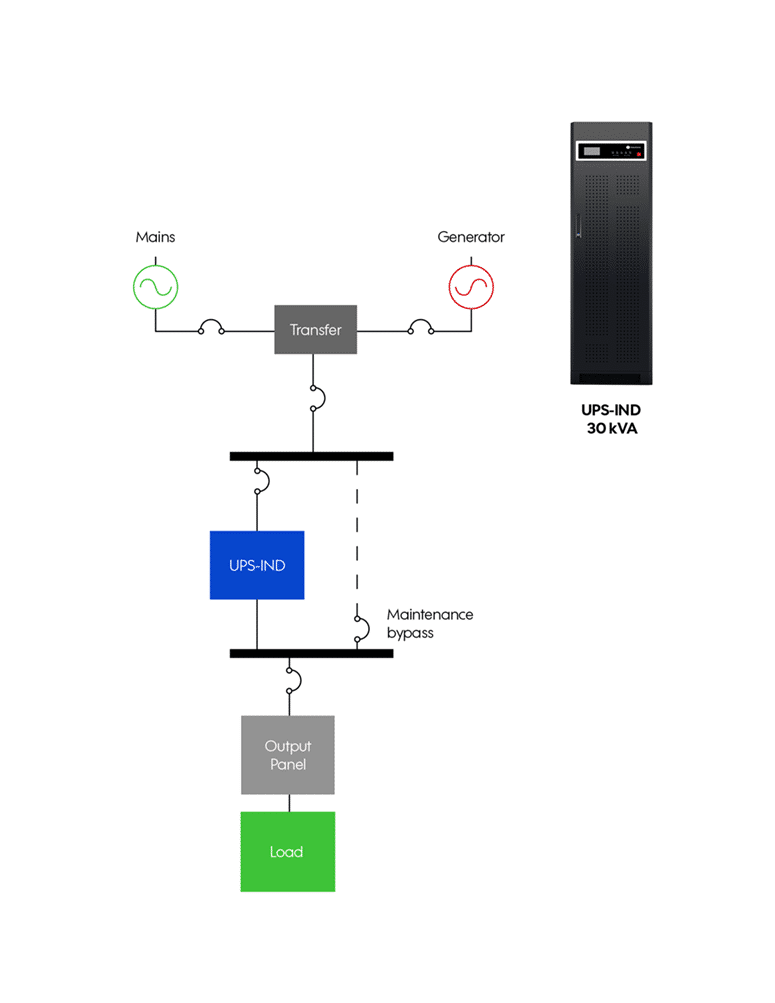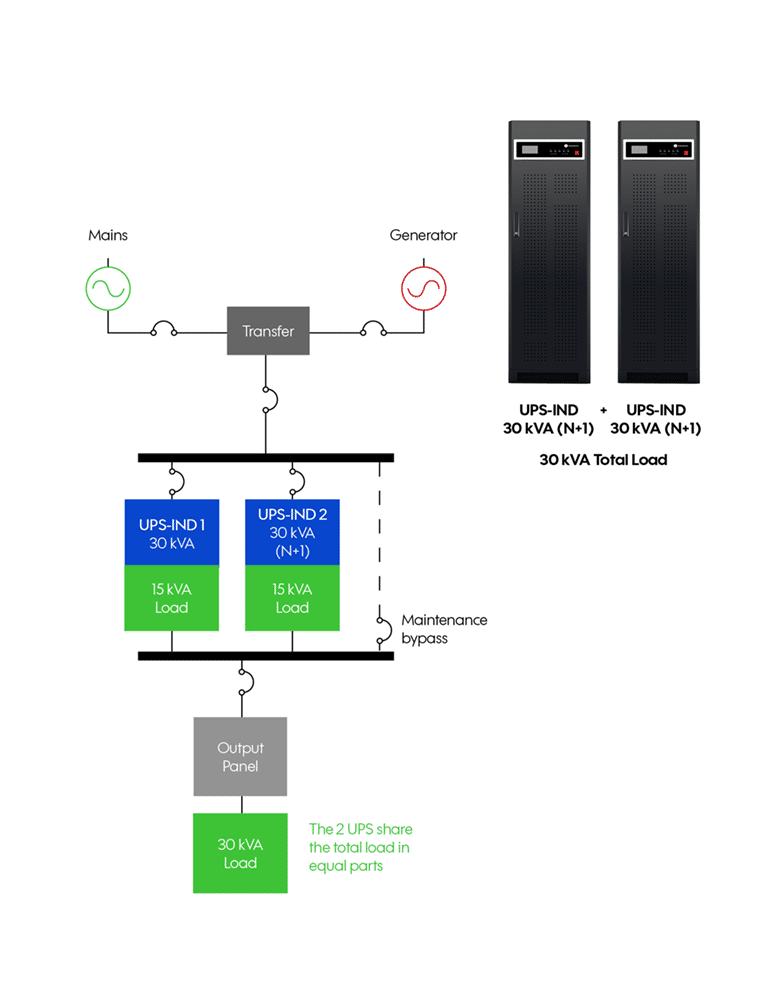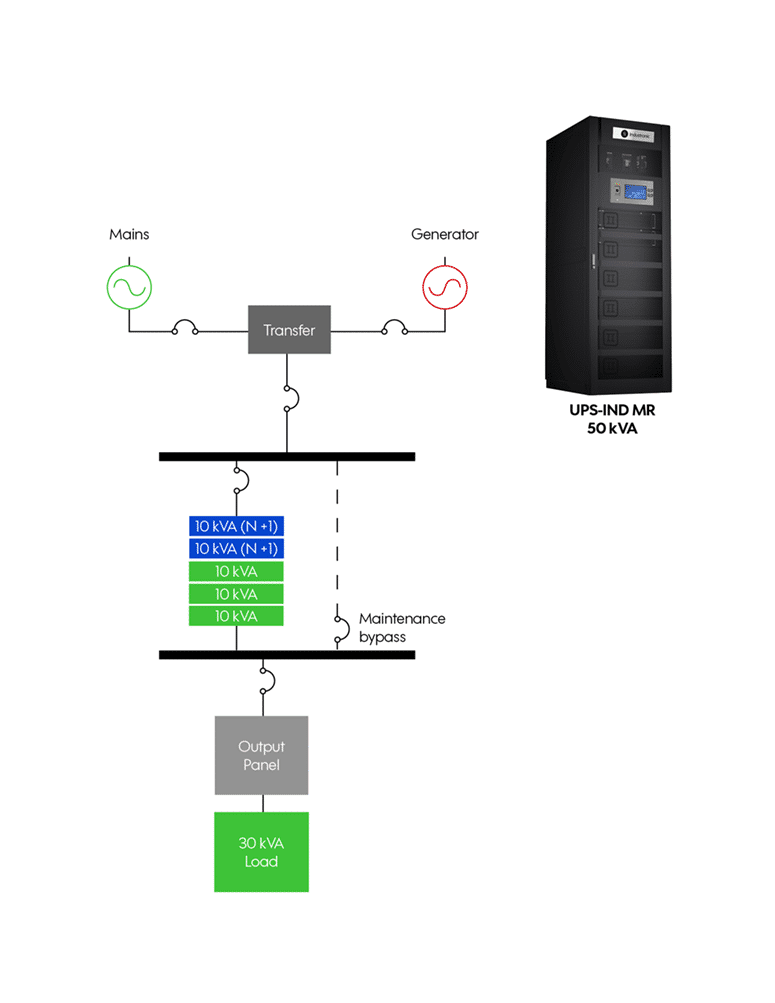Three types of UPS configuration
Power failures can be caused by different situations, accidental failures, such as electric shocks, intense storms, human failures, network management, etc.
Also, it should be considered that a bad quality in the power wave can cause reductions in the useful life of the components and faults for a malfunction of the equipment. This is why UPSs are so important to protect critical loads.
There are different configurations in UPS systems, the selection of the configuration will be determined by aspects such as load types, infrastructure, application and others.
We share three types of UPS configurations
UPS Stand Alone
Uninterruptible Power Supply (UPS), a device that is able to ensure and maintain uninterruptible power supply for a limited period of time, mainly by batteries that come into operation immediately (0.0 seconds) when there is a power outage from the mains. In addition to ensuring power supply to critical loads, a UPS can also improve quality by eliminating the most common irregularities in a voltage and current waveform to the load.
Features :
- The Stand Alone array consists of 1 single UPS directly feeding critical loads.
- Compact footprint vs. required capacity (kVA / kW).
- Mean time between failures (MBTF) of 233,000 hrs.
- Equipment efficiency is high at full capacity utilization.
Parallel Redundant UPS
This type of configuration consists of several UPS units connected in parallel (linked by a common output). All UPS must be of the same capacity and from the same manufacturer. The total capacity of the system will always be that of each unit and adding more units only increases the availability of the system (less probability of leaving the load unprotected). The maximum number of UPS is mainly determined by the manufacturer and can normally be up to 4 equipments (N+3).
In normal operation, UPSs in parallel share the load equally. When one of these UPSs becomes inoperative, either due to its failure or maintenance, the load it provides is distributed among all the other UPSs.
Features :
- The Redundant Parallel array consists of one UPS (N) + another UPS (N+1) equal and sharing the load.
- There can be 4 UPS in Parallel (N+3).
- Capacities do not add up, the failure of one equipment will not have an impact on the operation of the system.
- Mean time between failures (MBTF) is greater than 233,000 hrs.
- Reliability is increased.
- Equipment efficiency is limited to the total capacity.
Modular UPS
Modular technology is a UPS solution with internal modules (individual UPS power) centralized in a rack cabinet.
The modular UPS is a scalable solution in power (you can increase the kVA/kW capacity), redundancy is achieved by having independent controls for each module, they are synchronized in parallel to add capacity between them and the unused modules (without load) become N+1, N+2, N+N.
The total capacity of the equipment is defined by each manufacturer through its cabinet. For example a 100 kVA cabinet can carry 5 modules of 20 kVA or 10 modules of 10kVA.
Característica :
- Redundancy at the module or system level.
- Compact modular design provides easy maintenance and growth.
- Hot-Swap parts exchange and module failure will have no impact on equipment operation.
- Mean Time Between Failure (MBTF) is greater than 233,000 hrs and lower Mean Time To Repair (MTTR).
- Higher reliability and availability.
- High energy efficiency and low consumption.
- This technology facilitates obtaining a high rating (Tier)
By: Ing. Luis Landaverde


